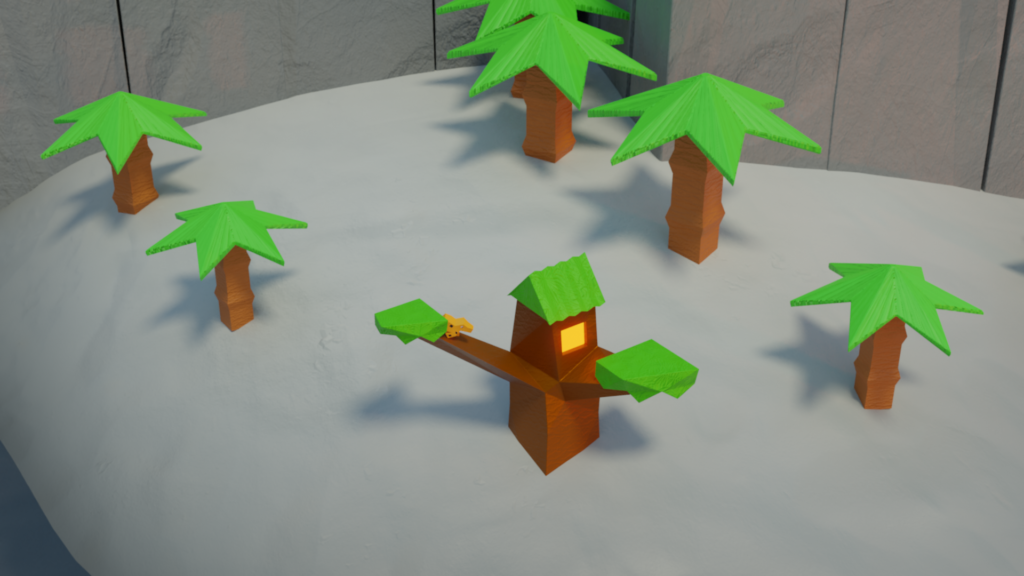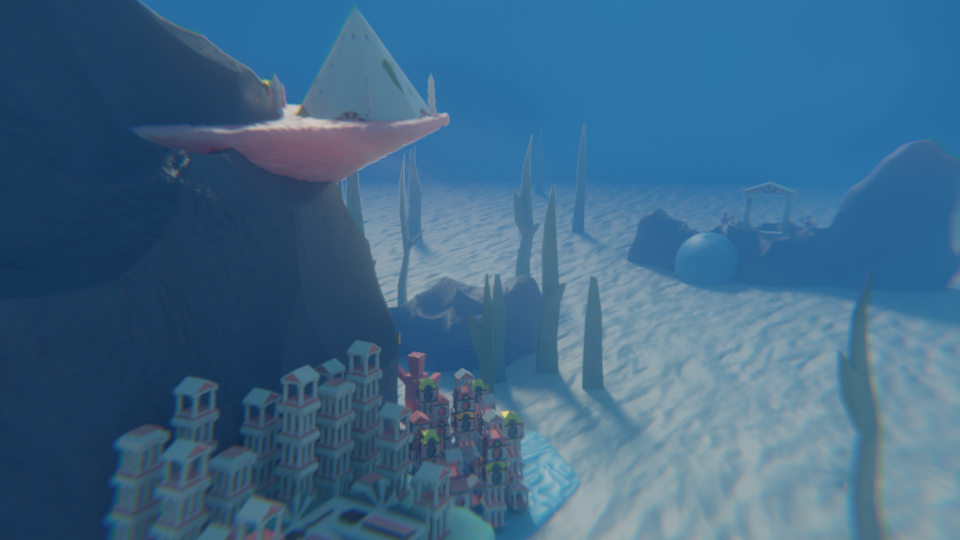My YouTube fans love Polytopia, so before moving onto other things, I think it is time to revisit Midjiwan’s murderously cute world one more time.
Concept
After I had completed my Mexican Village on a Giant Cactus project, I thought about extending the city on a giant object concept to other themes. One of them was Atlantis on a Giant Coral, but the tedium of modelling buildings had me shelve the idea for later. However, Polytopia has presented the opportunity to give this idea a crack.

Modelling Style and World
Much like the previous Vengir themed project, the style uses the low poly buildings with some bevels and PBR texturing of bricks, coral, and seashells. The world is within a coral reef off the coast of some Kickoo islands. The video pans off one of these islands to reveal the Aquarion’s Altar of Peace on a reef outcrop, before taking a trip under the sea. The city is perched on coral rock formation within a kelp forest.

Textures
PBR normal and roughness maps were used with solid colour diffuse/albedo maps, much like the last project. However, in addition, displacement shaders were used to give the rocks, coral, and sand greater cohesiveness. The coral materials were built from either various images of coral (and sliced red cabbage) and turned into PBR materials with Materialize, or were procedurally generated from Voronoi texture.

Animation
What I enjoyed best about the animation was the various animals within the video. We have a Leoon stalking through a Kickoo tree house, whales migrating by, the squid and jellyfish in the Altar of Peace, a giant crab, a Turmelon swimming by the city, and schools of fish (based on the standard blue fish, and the ones in the Altar of Peace). The fish were especially fun to animate based on IanHubert’s awesome tutorial.
The palm trees and kelp were animated with a wave modifier, whilst the sea surface was animated with an ocean modifier.

Compositing
Thanks to Blender Insight for his awesome compositing technique. It uses a cloudy noise mixed with the mist pass to render the ocean blue depth. Then it adds strong lens distortion and chromatic aberration to simulate refraction. Finally, the “God rays” are faked with the Sun Beams node. Unfortunately, Blender only takes Image-space inputs for this node (rather than converting from a 3D point). Thus, I had to manually insert keyframes for each scene to animate the movement of the God rays with the camera relative to the sunlight.
Rendering
If you take away one thing from reading this article: don’t use displacement shaders for animation (use modifiers instead). Thanks to their GPU-melting demands, it took anywhere from 8 to 30 minutes to render a single frame! The completed video likely took in excess of 500 hours of render time, more than double that of the Game of Thrones parody video. This was exacerbated by the constant crashing during rendering when using dual CPU and GPU rendering. GPU only rendering slowed the production even further.
Music
Key of A Major and C# Major, 125bpm
Timbres: steel pan, various synths, marimba, piano, orchestra, cymbal, sample of crashing waves on a beach
The Aquarion music is one of my favourites from the game. The synth sound design is incredible, and can be broken down into five parts:
- The main melody played by a soft, metallic synth
- A rapidly ascending and descending (both in pitch and volume) shimmering melodic line in the background
- Punchy, almost militaristic drums
- A whale-sounding counterpoint
- White noise in the background to simulate waves on a beach
I arranged the piece with an ABA structure, with the A taking the original music, and the B section built on a mediant modulation (C# major). The main melody is played with a steel pan for the tropical theme with piano and orchestral chords underneath with lengthy reverb to seal the underwater theme. A beefy synth plays the bassline and the whale sound counterpoints. A simple additive synth plays a rapidly ascending and descending scale with a volume LFO to replicate the shimmering background synth in the original. The percussion was more subdued with a marimba playing the drum and a cymbal, both buried in the mix to emphasise atmosphere over rhythm. Finally, a sampled (rather than synthesised) sound of crashing waves on an beach plays in the background.
